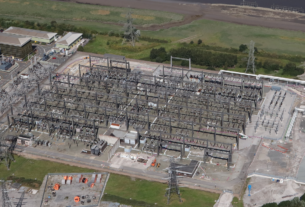China – Over the last four decades, China’s incredible economic growth has lifted hundreds of millions of people out of poverty, making the country not only a leader in many industries, but also the world’s greatest carbon emitter, accounting for one-third of global carbon dioxide (CO2) emissions.
China produces more than half of the world’s steel and cement, but CO2 emissions from just those two industries in China exceed the total CO2 emissions of the European Union.
China aims to achieve carbon neutrality by 2060 and a peak in CO2 emissions by 2030. Because the energy sector accounts for about 90% of China’s greenhouse gas emissions, energy policies are key to the country’s transition to carbon neutrality. An Energy Sector Roadmap to Carbon Neutrality in China, a new IEA research issued examines how China might achieve its goals while guaranteeing energy security and affordability for its citizens. It demonstrates that, given the size and dynamism of China’s economy, the required investments are well within China’s capabilities. The paper responds to China’s appeal to the IEA to collaborate on long-term strategies.
Headway toward renewable energy transition
China has made great headway toward a renewable energy transition, but it still confronts significant difficulties. Coal provides for more than 60% of electricity output, and China continues to build new coal power plants on its own soil. At the same time, China has added more solar power capacity year after year than any other country. It is the world’s second largest oil consumer, but it also has 70% of the global production capacity for electric vehicle batteries.
At the same time, meeting China’s climate ambitions cannot be achieved only through the deployment of renewables and electric vehicles. It will need to implement measures to reduce emissions from its massive existing fleet of fossil-fuel-powered power plants, steel mills, cement kilns, and other industrial facilities. If China’s existing emissions-intensive energy infrastructure continues to operate as it does today, its CO2 output between now and 2060 would equal one-third of the global carbon budget for limiting global temperature rise to 1.5 degrees Celsius. This is in addition to any additional plants that may be constructed to suit rising demand.
China Roadmap
The China Roadmap outlines a route commensurate with China’s increased aspirations outlined last year, in which CO2 emissions peak before 2030 and carbon neutrality is realized before 2060. The key drivers of carbon reductions in this pathway between now and 2030 are energy efficiency improvements, renewables expansion, and a reduction in coal consumption. Renewable energy generation, primarily wind and solar PV, more than sevenfolds between 2020 and 2060, accounting for about 80 percent of China’s power mix by then. Industrial CO2 emissions are expected to fall by roughly 95 percent by 2060, with the importance of emerging innovative technologies like hydrogen and carbon capture expanding rapidly after 2030. These reforms will benefit China’s labor market by creating more new jobs in developing low-carbon energy technologies than are lost in declining fossil fuel industries.
The Roadmap also investigates options for China to pursue – and benefit from – a speedier clean energy transition, which would result in China’s CO2 emissions falling to about 20% below their current level by 2030. Aside from the obvious benefits of mitigating the impact of climate change, the social and economic benefits include increased wealth for regions that have not yet completely benefited from China’s economic development and a larger net gain in job creation across the country. And, because the cumulative investments in the faster transition are similar to those in the slower one, investment requirements are not an impediment to the faster transition.




